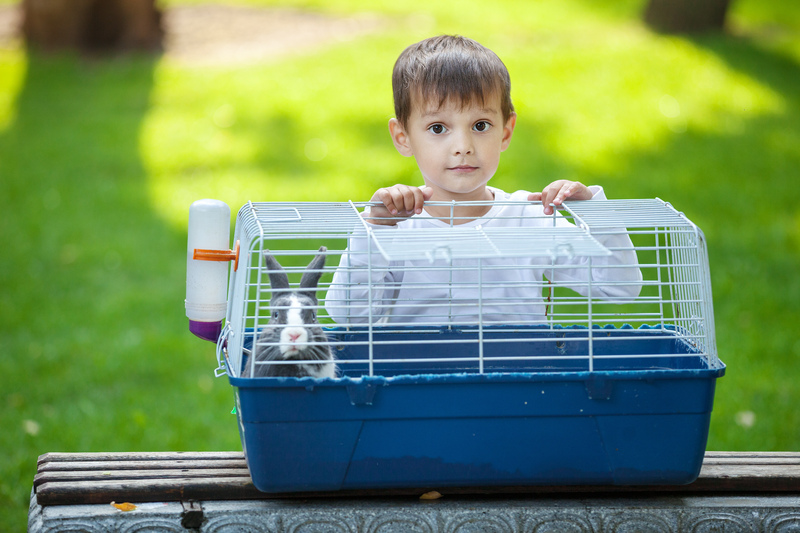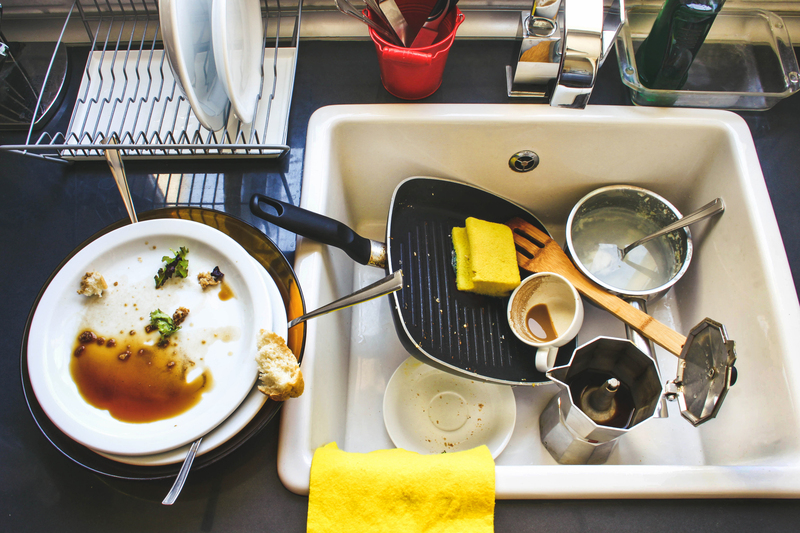Step-by-Step Guide to Packing Like a Pro for Moving
Posted on 20/05/2025
Step-by-Step Guide to Packing Like a Pro for Moving
Moving to a new home can be both exciting and overwhelming. Efficiently packing your belongings is not just about placing items into boxes - it's about organizing, protecting, and minimizing stress during your transition. In this comprehensive guide, we'll share expert tips and practical steps to help you pack like a professional mover, ensuring your relocation is smooth and hassle-free.
Why Packing Properly Matters When You Move
Packing effectively for a move does more than just save time. It also:
- Protects your belongings from damage
- Makes unpacking at your new home much easier
- Helps you stay organized at every stage of the process
- Reduces the risk of misplacing items
- May lower your moving costs by using space efficiently
Packing for a move can seem daunting, but with the right strategies, you'll feel prepared and confident every step of the way.

Step 1: Gather Your Packing Supplies
Before you start, ensure you have all the necessary packing materials. Not only will this save trips to the store, but it will also help you pack faster.
Essential Packing Materials Checklist
- Sturdy moving boxes of various sizes
- Packing tape (heavy-duty, strong adhesive)
- Bubble wrap and packing paper
- Plastic wrap for furniture and delicate items
- Markers and labels
- Scissors and a box cutter
- Furniture pads or blankets
- Resealable bags for small parts and hardware
Pro tip: You can often find free moving boxes at grocery stores, liquor stores, or on online marketplaces.
Step 2: Declutter Your Home
Before you pack, declutter. Moving is the perfect time to re-evaluate which items you truly need. Fewer items mean fewer boxes, less labor, and a fresher start in your new home.
How to Declutter Efficiently
- Start early: Give yourself plenty of time to sort through belongings.
- Room by room: Focus on one space at a time to avoid feeling overwhelmed.
- Sort items into four categories: keep, donate, sell, or discard.
- Be honest about what you use and what you love.
- Schedule charity pickups or yard sales ahead of your move date.
Step 3: Create a Packing Plan and Timeline
Organization is key to packing like a pro. Develop a moving checklist and schedule to keep track of when each room will be packed.
Tips for Planning Your Move
- Make a moving binder or digital folder for all moving-related documents.
- Label boxes by room and by priority (e.g., essentials, non-essentials).
- Set deadlines for each packing task.
- Reserve special boxes for essential items you'll need first in your new home.
Step 4: Pack Non-Essentials Early
Start with items you use less frequently. This approach prevents last-minute rushing and makes moving day less stressful.
What to Pack First
- Out-of-season clothes and shoes
- Books, DVDs, and decor
- Spare linens and towels
- Kitchenware used rarely (specialty appliances, vases, etc.)
- Sporting goods and hobby materials
Packing tip: If it's covered in dust, it can go in a box now!
Step 5: Master Professional Packing Techniques
The secret to packing like a professional mover is knowing how to properly wrap, pad, and load your boxes.
Box Packing Best Practices
- Heavier items on the bottom, lighter items on top.
- Don't leave empty space: Fill gaps with packing paper or towels.
- Don't overpack or underpack boxes; aim for snug and secure.
- Label every box on multiple sides, noting room and contents.
- Seal boxes securely with strong tape, reinforcing seams.
How to Pack Fragile Items
- Use plenty of bubble wrap or wrapping paper for glasses, dishes, and electronics.
- Individually wrap each item.
- Use thick towels or linens for extra cushioning inside boxes.
- Mark fragile boxes clearly and make sure they are easily visible to movers.
Step 6: Strategically Pack Each Room
Focus on one room at a time. This not only keeps you organized, but also makes unpacking much easier at your new place.
Packing the Kitchen Like a Pro
- Use dish pack boxes for plates and glasses.
- Stack plates vertically, like records, for extra protection.
- Separate utensils and group similar items together.
Packing Bedrooms
- Pack off-season clothing and accessories first.
- Use wardrobe boxes for hanging clothes to reduce wrinkles.
- Protect mattresses and pillows with covers or large plastic bags.
Packing Living Rooms & Electronics
- Label all cables before disconnecting electronics.
- Pack TVs and screens in their original boxes if available.
- Disassemble large furniture if possible and keep hardware in labeled bags.
Step 7: Label & Inventory Everything
Labeling is just as important as packing. A well-labeled box saves time and frustration on move-in day.
How to Label Like a Moving Expert
- Write the room name, box contents, and priority (e.g., "Open First") on at least two sides.
- Use colored stickers or tape to color-code rooms.
- Assign a number to each box and keep a master inventory list.
Step 8: Prepare an Essentials Box
On moving day, you'll want certain items easily accessible. Prepare a dedicated "essentials" box or suitcase for each family member.
What to Include in Your Essentials Kit
- Toiletries and medications
- Phone chargers and electronics
- Snacks and bottled water
- Change of clothes and pajamas
- Important documents (passport, lease, keys)
- Tools and basic cleaning supplies
- Bedding for the first night
Step 9: Final Packing and Moving Day Tips
As your move approaches, it's time to tackle the last areas - and double-check your work.
Last-Minute Packing Suggestions
- Pack up perishable or refrigerated foods on the last day.
- Dismantle remaining furniture if possible.
- Walk through each room to ensure nothing is left behind.
- Double-check closets, drawers, and garage spaces.
Important: Make sure all boxes are sealed and labeled before the movers arrive.
Bonus: Pro Moving Hacks to Make Your Move Easier
Want to move like a professional? Try these expert tips:
- Take photos of electronics before unplugging them for easy set-up at your new place.
- Keep hardware for disassembled furniture in labeled resealable bags taped to the item.
- Use suitcases with wheels for heavy books and dense items.
- Pack hanging clothes in garbage bags, cinched around the hanger hooks, for quick closet transfer.
- Use towels and linens as extra padding for fragile items.
- Keep cleaning supplies handy for final cleaning and any spills during the move.
Common Packing Mistakes and How to Avoid Them
- Procrastinating: Start packing as early as possible to avoid the last-minute rush.
- Overfilling boxes: Use small boxes for heavy items (books, dishes) and large boxes for light items (pillows, linens).
- Forgetting to label: A generic box is a headache when unpacking. Always be specific.
- Packing forbidden items: Movers will not transport hazardous materials, perishables, or plants. Move these items yourself or discard them responsibly.
Unpacking Like a Pro After the Move
Congratulations! You made it successfully to your new home. Now, keep your momentum by unpacking strategically:
- Start with essentials and bedroom kits so everyone is comfortable the first night.
- Work room by room, unpacking boxes according to your moving inventory list.
- Break down boxes and tidy as you go to keep your new space clear.

Moving Packing FAQs
1. How far in advance should you start packing for a move?
Begin at least 4-6 weeks before moving day, starting with items you use least. Early packing allows time for decluttering, organizing, and adjusting your packing plan as needed.
2. What's the best way to pack clothes for moving?
Use wardrobe boxes for hanging items and pack folded clothes in suitcases, large boxes, or vacuum-sealed bags. Protect delicate fabrics with tissue paper and keep a few outfits handy in your essentials box.
3. Can I use household items as packing materials?
Absolutely! Soft items like towels, blankets, and clothing make excellent padding for fragile objects. Just ensure items are clean before using them in the packing process.
4. Should I hire professional packers or do it myself?
Professional packing services save time and ensure items are perfectly protected, but DIY packing can save money. With this guide, you'll be able to pack like a moving pro on your own.
In Summary: Pack and Move Like a Pro
Packing for a move is manageable - and even enjoyable - when you follow a plan and use expert techniques. From gathering moving supplies and decluttering to mastering professional packing strategies and labeling like an expert, you can tackle every step confidently.
We hope this step-by-step packing guide empowers you to protect your belongings and set up your new home with ease. Happy moving!
